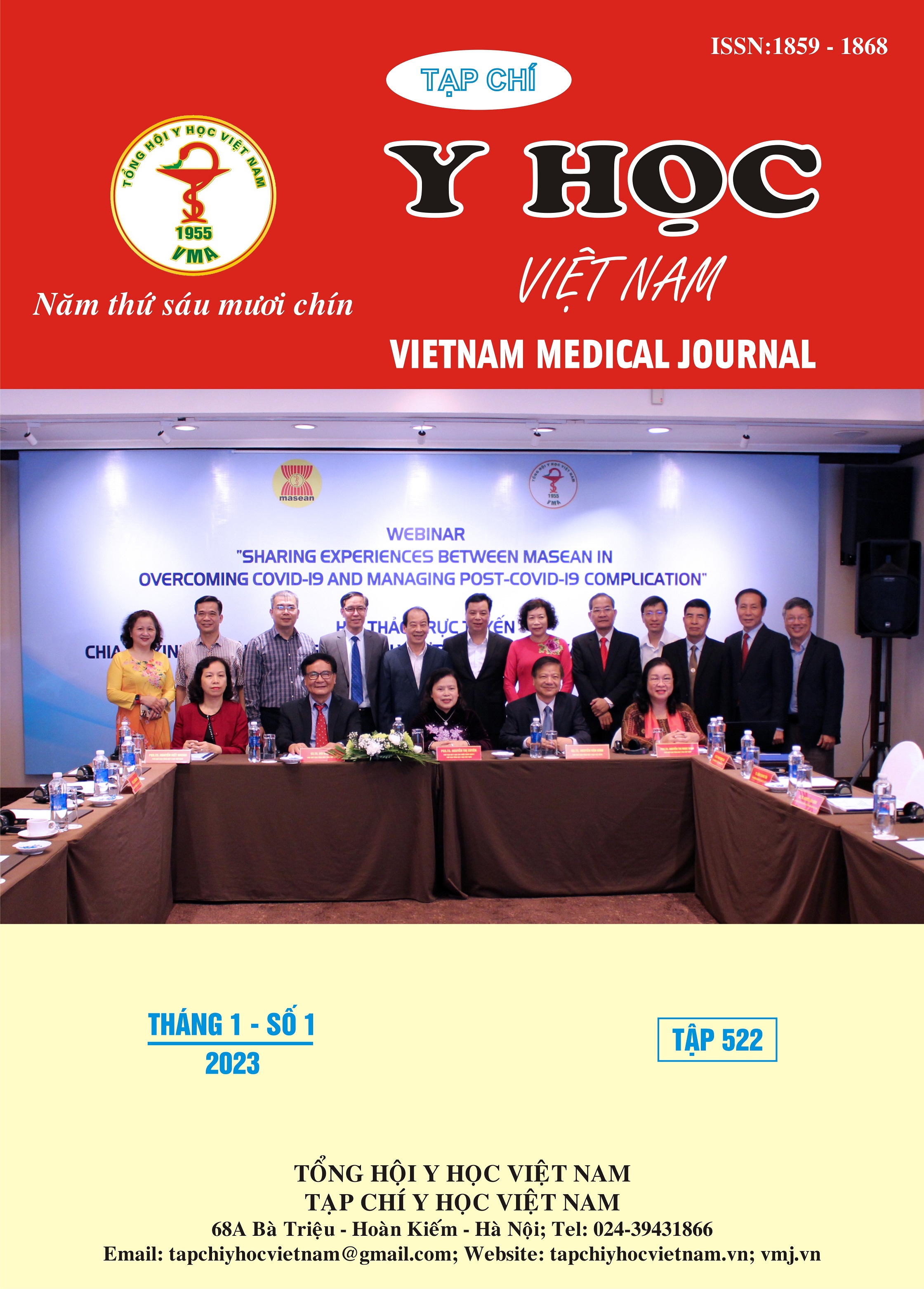OUTCOMES IN THE TREATMENT OF SEPTIC SHOCK AT NATIONAL HOSPITAL OF TROPICAL DISEASES in 2017 - 2022
Main Article Content
Abstract
A cross-sectional study to describe the outcomes of septic shock of 260 patients who were ≥ 18 years old with diagnosed with septic shock after being hospitalized at National Hospital of Tropical Diseases in 2017-2022. The results shown that, at hospital admission, 98.8% of patients had SOFA score ≥ 2 points (mean 10 ± 4 points); the rate of positive blood culture accounted for 23.5%; more gram (-) than gram (+) bacteria, 16.2% and 7.3% respectively. The most common antibiotics given to patients with septic shock were Imipenem+cilastatin (44.6%), Meropenem (39.6%) and Linezolid (26.9%); 68.1% of patients were given a combination of 2 antibiotics. Nor-epinephrine was the vasopressor of choice in 98.8% of cases, with an average dose of 0.28±0.44 mcg/kg/min; 76.2% of patients received 2 or more vasopressors. Within 6 hours of shock, the proportion of patients with mean blood pressure (MAP) > 65 mmHg and urine ≥ 0.5 ml/kg/hour was 80.8% and 35.0%, respectively. There were 38.1% of cases out of shock; with 14.1% of cases re-shocked occurring on average 12±10 days after escaping septic shock, the recovery rate was 42.9%. Early (≤3 days) and late (>3 days) deaths occurred in 30.4% and 34.6% patients, respectively
Article Details
Keywords
Outcomes in the treatment, septic shock, National Hospital of Tropical Diseases
References
2. Bauer M, Gerlach H, Vogelmann T, Preissing F, Stiefel J, Adam D. Mortality in sepsis and septic shock in Europe, North America and Australia between 2009 and 2019— results from a systematic review and meta-analysis. Critical Care. 2020;24(1):239. doi:10.1186/s13054-020-02950-2
3. Phạm Thanh Bằng. Đặc điểm lâm sàng, cận lâm sàng và kết quả điều trị sốc nhiễm khuẩn có hội chứng đông máu rải rác trong lòng mạch. Luận văn bác sỹ nội trú. Published online 2018:Trường Đại học Y Hà Nội, Hà Nội.
4. Kumar A, Roberts D, Wood KE, et al. Duration of hypotension before initiation of effective antimicrobial therapy is the critical determinant of survival in human septic shock. Crit Care Med. 2006;34(6):1589-1596. doi:10.1097/01.CCM.0000217961.75225.E9
5. Vũ Hải Yến. Nghiên cứu đặc điểm lâm sàng, cận lâm sàng và kết quả của liệu pháp điều trị sớm theo mục tiêu ở bệnh nhân sốc nhiễm khuẩn. Luận văn Thạc sĩ. Published online 2012:Trường Đại học Y Hà Nội, Hà Nội.
6. Trần Văn Quý. Nghiên cứu một số yếu tố tiên lượng tử vong ở bệnh nhân sốc nhiễm khuẩn điều trị tại Bệnh viện Nhiệt đới Trung Ương. Luận văn Thạc sĩ. Published online 2019:Trường Đại học Y Hà Nội, Hà Nội.
7. Hoàng Văn Quang. Nghiên cứu đặc điểm lâm sàng và kết quả điều trị suy đa tạng ở bệnh nhân sốc nhiễm khuẩn. Luận án Tiến sĩ. Published online 2011:Trường Đại học Y Hà Nội, Hà Nội.
8. Fabrice Daviaud, David Grimaldi, Agnès Dechartres, Julien Charpentier, Guillaume Geri, Nathalie Marin, Jean-Daniel Chiche, Alain Cariou, Jean-Paul Mira & Frédéric Pène. Timing and causes of death in septic shock | Annals of Intensive Care | Full Text. Published 2013 2008. Accessed April 18, 2021. https://annalsofintensivecare.springeropen.com/articles/10.1186/s13613-015-0058-8
9. Marshall, John C, Cook, Deborah J, Chiristou, Nicolas V, Gordon R, Sprung, Charles, Sibbald, William. Multiple organ dysfunction score: a reliable descriptor of a complex clinical outcome. Crit Care Med. 23(10), pp.1638-1652.
10. Lê Văn Ký. Đánh giá tác dụng của Noradrenaline truyền tĩnh mạch trong điều trị sốc nhiễm khuẩn. Luận văn thạc sỹ y học. 1997;Trường Đại học Y Hà Nội, Hà Nội.


